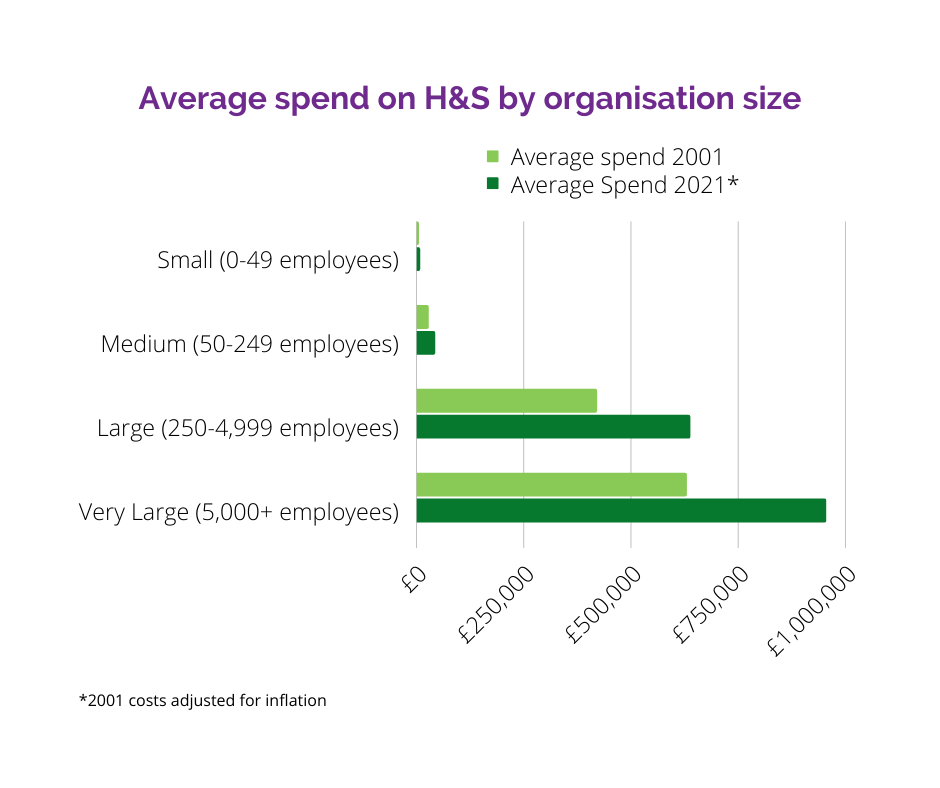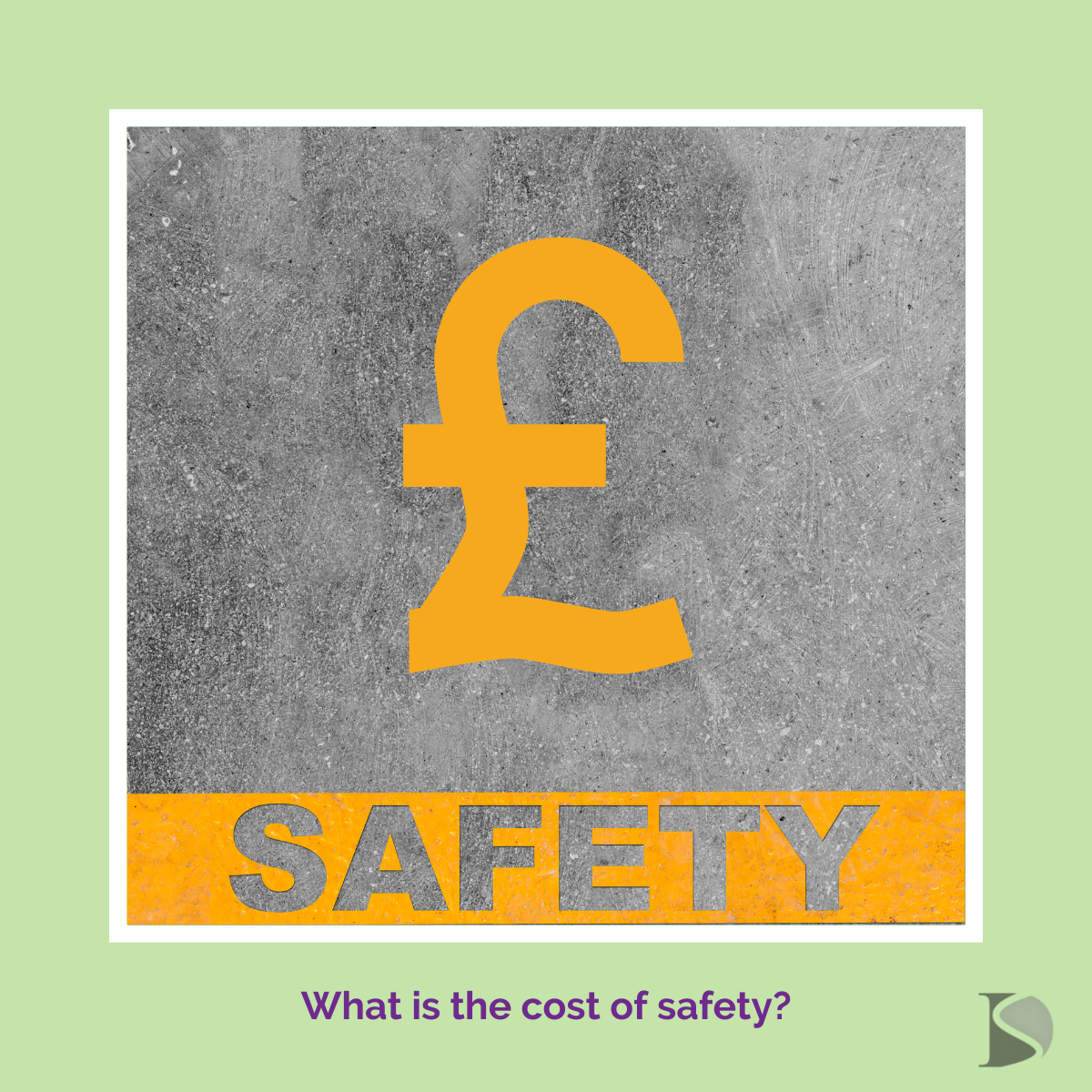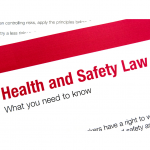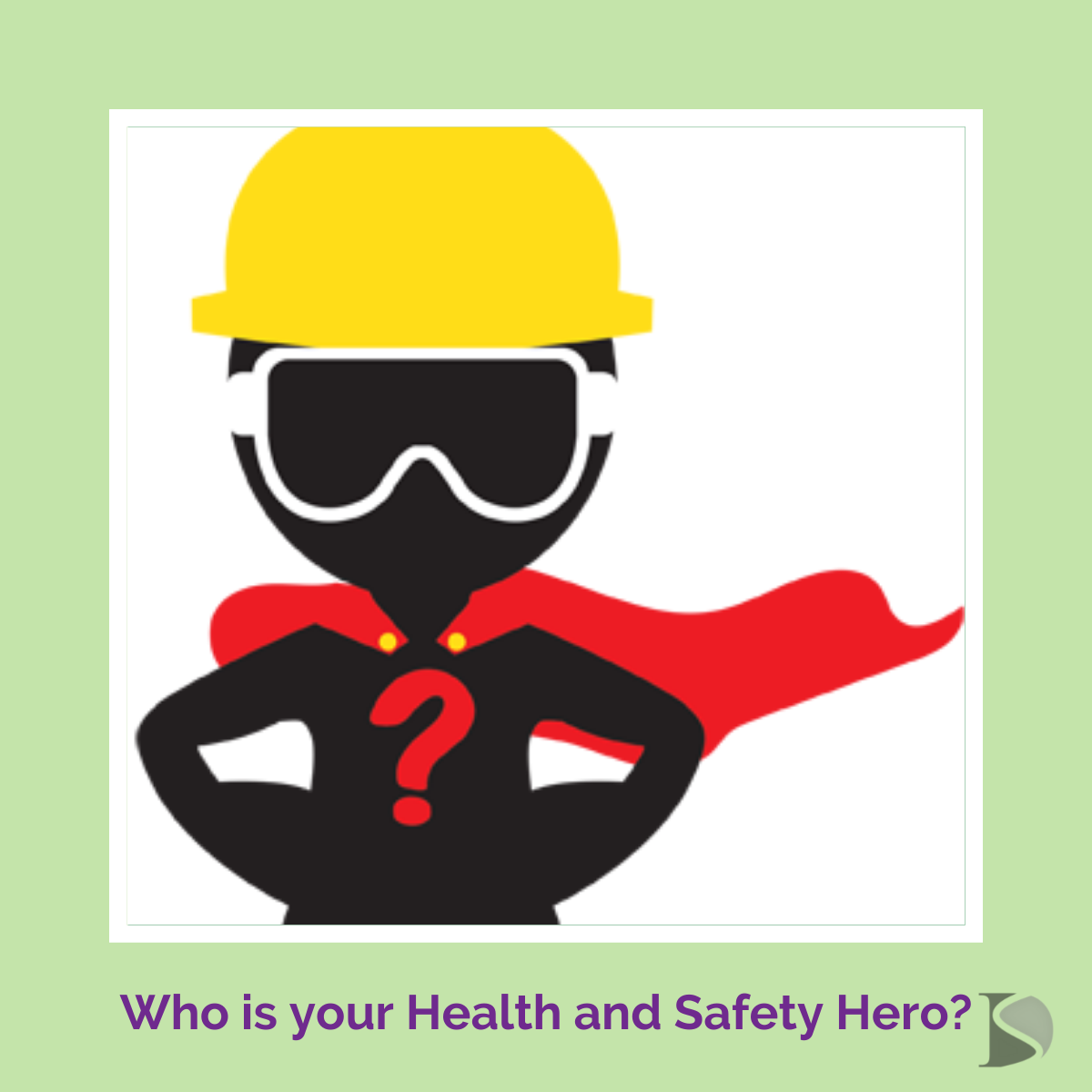What is the cost of safety? How much does your organization spend on health and safety?
The costs of health and safety includes both the cost of compliance and the cost of things going wrong – for example, how much do you spend on people being off sick with a case of work related ill-health? If you sit down and add your costs up, I bet it comes to more than you think.
Many businesses owners see the cost of Health and Safety compliance as a burden, a negative on the balance sheet. But when you look at some startling statistics around the costs health and safety, you quickly realise that good, proactive health and safety management is an investment in your business. Ready to look at some stats?…..read on!
What are the costs of an enforcement action?
If something goes horribly wrong in your business then chances are the HSE will come knocking on your door. Don’t forget, its a legal requirement to report certain incidents, diseases and dangerous occurrences to the HSE (check out the RIDDOR regs) so you are literally inviting them in. On top of that, HSE Inspectors have the power to walk in to any workplace at any time, and if they find anything wrong they may choose to take action against you.
From enforcement data released by the HSE, the following actions were taken in the year 2020/2021
Enforcement actions taken by HSE in 2020 / 2021
| Improvement Notices Issued | 1,821 |
| Immediate Prohibition Notices Issued | 1,107 |
| Successful prosecutions resulting in a conviction | 185 |
Fines handed down by courts following successful H&S conviction 2020 / 2021
| Number of Convictions | Total fines | Average fine per conviction | |
|---|---|---|---|
| Manufacturing | 59 | £7,979,675 | £135,249 |
| Construction | 66 | £5,256,754 | £79,648 |
| Agriculture | 8 | £65,867 | £8,233 |
| Business Services | 14 | £3,384,085 | £241,720 |
| Utilities | 9 | £5,684,000 | £631,556 |
| Other industries | 29 | £4,508,284 | £155,458 |
| All Industries | 185 | £26,878,665 | £145,290 |
If you face a prosecution, this can result in a fine, a suspended sentence or even an immediate custodial sentence depending on the nature of the breach of health and safety law that you are prosecuted for. The HSE have set out sentencing guidelines for the courts for health and safety cases so that punishments are applied consistently.

As well as potential fines, you need to take into account all the other costs that rack up when facing a HSE investigation. You will have to consider the amount of manhours spent on cooperating with the HSE, doing your own internal investigations and paying people like solicitors, insurers and outside consultants helping you with the case. Add on to this the inevitable loss of morale in the workforce and reduces productivity and the costs soon add up.
Fees For Intervention (FFI)
If you are found to have breached health and safety law, the HSE have the power to charge you for their time under an arrangement called Fees For Intervention (FFI). A fee is payable to HSE if:
- a person is contravening or has contravened health and safety law; and
- an inspector is of the opinion that the person is or has done so, and notifies the person in writing of that opinion.
The current FFI rate is £163 per hour and the HSE will charge you for all the time they have spent carrying out their investigations, helping you put things right, building their case against you and the time for taking action, eg attending court hearings.
If you are found not to have broken health and safety law, you will not face any fees for intervention.
What is the cost of H&S failures to Britain?
If somebody is hurt at work, there are not only costs to the employer to think about. We also need to consider the costs to individuals and to society in general.
HSE use a Costs to Britain model to estimate the financial burden to the wider society of health and safety failures in the workplace. Due to the Covid-19 pandemic and the impact on finances overall, the HSE last published their Costs to Britain model for the 2018 / 2019 financial year. The Cost to Britain model considers the costs to individuals, costs to Government and costs to employers. Costs included in each category are:
Cost to Individuals:
- loss of employment income
- estimated monetary value of the impact of quality and loss of life of affected workers
Cost to Government
- NHS costs
- Loss of tax revenue
- Benefits payments
Costs to Employers
- productivity costs (loss of working hours, replacing equipment or staff, loss of morale)
- enforcement action
- increased insurance premiums
From the HSE Costs to Britain model in 2018 / 2019, the total cost of workplace injury and ill-health was £16.2 billion. It was also found that individuals bore the most of these costs:
| Costs | |
|---|---|
| Individuals | £9.6 bn (59%) |
| Government | £3.5 bn (22%) |
| Employers | £3.2 bn (20%) |
| Total Costs | £16.2 bn |
Of the £16.2 billion, 66% or £10.6 billion of this cost was due to ill-health cases (new cases) caused or made work by work, and 34% or £5.6 billion was due to workplace injuries, including fatalities.
This breaks down as:
| Total number of cases | Total costs to society | Average cost per case | |
|---|---|---|---|
| Work related ill-health | 559,000 | £10.6 bn | £19,000 |
| Fatalities and injuries | 610,000 | £5.6 bn | |
| – fatalities (134) | £1.7 million | ||
| – work related injuries | £8,800 |
What are the costs of Health and Safety compliance?
Looking after health and safety in your organisation is an investment that contributes to the overall success of your business. Getting things wrong can not only have a human impact, but it can bring a company to the point of bankruptcy – and you don’t need to wait for a HSE prosecution for that to happen!
It is difficult to estimate the overall financial impact of poor safety management as a lot of the impacts can be hidden. Some of the hidden costs of poor safety management might include lack of morale, and therefore productivity in your workforce; high staff turnover; failure to recruit the best people; suppliers and clients choosing not to work with you; and so on and so on.
So how much does it cost to get things right when it comes to health and safety? Well that all depends on the type of work you do, the size of your organisation, and the risks associated with the work that you do.
In the early 2000’s the HSE commissioned some research looking at the cost of compliance with health and safety regulations in SME’s (check out the research report here). Through a series of questionnaires and visits, they calculated the average spend on health and safety by different sizes of organisations. These costs are based on 2001 costs, but have been corrected for inflation here.

The main areas of spending for small and medium sized business when it comes to health and safety compliance include:
- costs of employee time
- training of personnel
- equipment
- H&S consultant fees or costs of employing a designated H&S person
- provision of PPE
This research shows that small businesses spend on average £6,270 per annum on H&S compliance (adjusted for 2021 costs) and medium businesses spend on average £41, 455 per annum (adjusted for 2021 costs. Comparing the cost of compliance against the cost to individuals, employers and society in general show that good health and safety management is indeed an investment in your business.
So, what is the key message to take away?
Protecting the health and safety of your workers and anyone who may be affected by your organisations activities is a key function of any business. Not only is it a legal requirement and right thing to do, it also makes great financial sense. The costs of getting things right is far cheaper than the costs associated when things go wrong.
Want to understand more about the costs of managing safely and the positive impacts it will have on your business?








